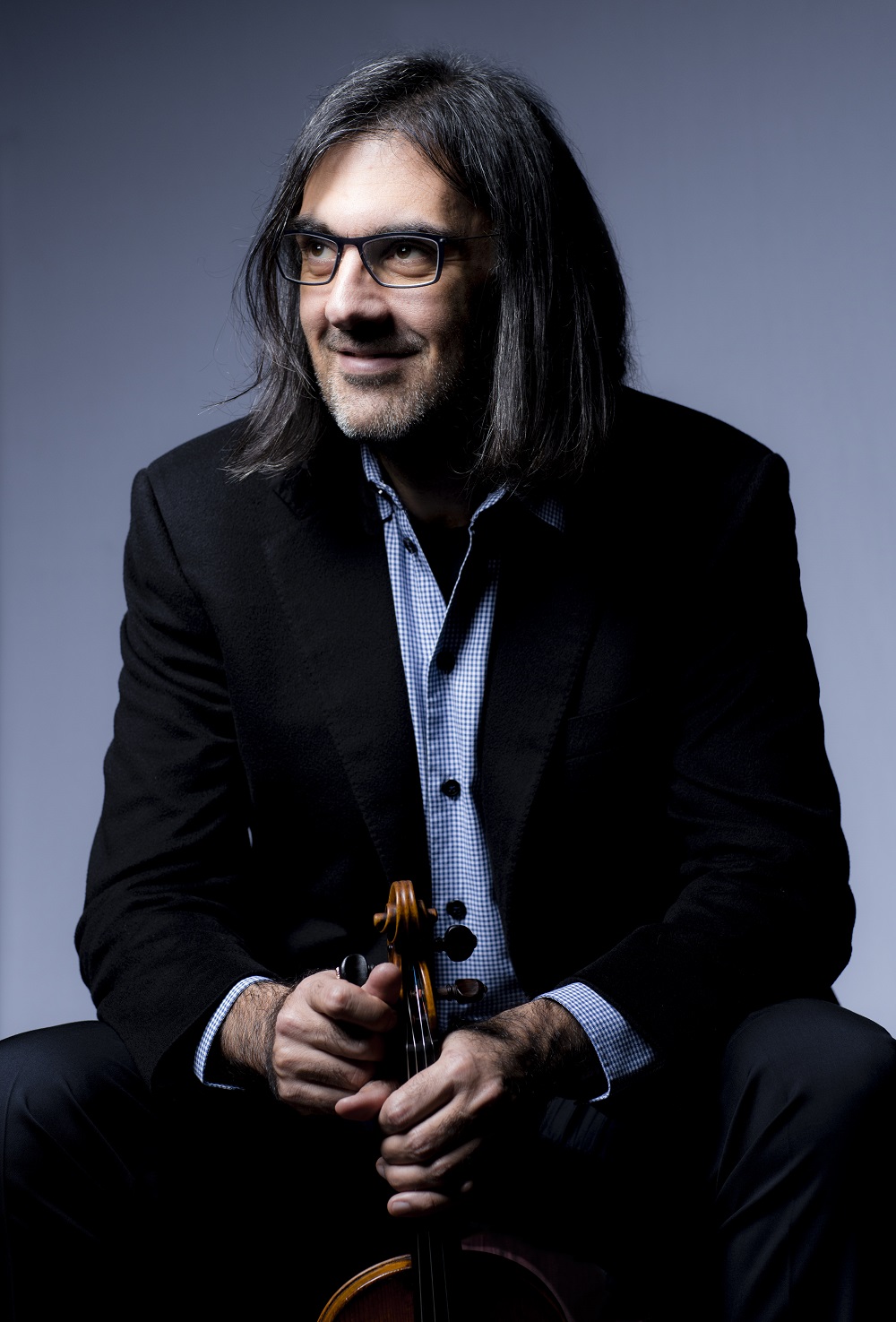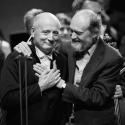The Concertgebouw Orchestra of Amsterdam began their two-concert visit to the Barbican with a crowd-pleasing programme: Brahms and Beethoven. We are used to hearing the pinpoint precision and transparent textures of the London Symphony Orchestra from the Barbican stage, but the Concertgebouw has a different sound.
Second violins sit to the conductor’s right, with the cellos centre and the double basses lined up along the back. The result is a more singular and unified string sound. The textures are not as clean or analytical, but cohere with a warm, undefinable glow. Characterful woodwind soloists also add to the orchestra’s character, and Beethoven in particular gives them plenty of chances to shine in the Pastoral Symphony. But this wasn’t an all-Dutch affair. The orchestra was led by the British conductor Daniel Harding (the Chief Conductor position is currently in interregnum), and the Brahms Violin Concerto was played by Greek violinist Leonidas Kavakos. Each brought their own qualities, but the results did not always cohere.
 The Brahms is one of the most symphonic of violin concertos, a fact driven home by both soloist or conductor. The opening tutti was bold and emphatic, and Harding seemed reluctant to cede the spotlight to Kavakos (pictured right by Marco Borggreve). His first entry was abrasive, a high, declamatory motif delivered with raw energy, but without tonal control or elegance. Kavakos soon calmed down, and his later statements of the motif, while still emphatic, had more colour. But he continued to paint the music in bold strokes. The second subject, usually a sentimental, even naïve, melody, was subject to intense and continuous vibrato, a wearing experience. Harding maintained the pace, and the drama was carried by the sheer character of the Concertgebouw sound. The second movement opens with a long oboe solo, here performed at a bizarrely loud dynamic. The player raised his bell to project over the stand, but it wasn’t necessary. When Kavakos responded, he again applied heavy vibrato, though for this melody it seemed more fitting. The movement also gave Kavakos a chance to show off the rich tone he can draw from his lower strings, a distinctive quality, effectively applied. Kavakos’s muscular technique brought suitable weight to the dance rhythms of the finale. And Harding maintained the pace across the movement, relying on Brahms’s always-astute orchestration to shape and vary the music. After all that, a solo Bach encore, pristine and clear, was a welcome fillip.
The Brahms is one of the most symphonic of violin concertos, a fact driven home by both soloist or conductor. The opening tutti was bold and emphatic, and Harding seemed reluctant to cede the spotlight to Kavakos (pictured right by Marco Borggreve). His first entry was abrasive, a high, declamatory motif delivered with raw energy, but without tonal control or elegance. Kavakos soon calmed down, and his later statements of the motif, while still emphatic, had more colour. But he continued to paint the music in bold strokes. The second subject, usually a sentimental, even naïve, melody, was subject to intense and continuous vibrato, a wearing experience. Harding maintained the pace, and the drama was carried by the sheer character of the Concertgebouw sound. The second movement opens with a long oboe solo, here performed at a bizarrely loud dynamic. The player raised his bell to project over the stand, but it wasn’t necessary. When Kavakos responded, he again applied heavy vibrato, though for this melody it seemed more fitting. The movement also gave Kavakos a chance to show off the rich tone he can draw from his lower strings, a distinctive quality, effectively applied. Kavakos’s muscular technique brought suitable weight to the dance rhythms of the finale. And Harding maintained the pace across the movement, relying on Brahms’s always-astute orchestration to shape and vary the music. After all that, a solo Bach encore, pristine and clear, was a welcome fillip.
The Pastoral Symphony is a good fit for the Concertgebouw sound, especially its characterful woodwinds. Harding is good at invoking a texture and a sound, and that proved ideal for the opening movement. He is less good at shaping phrases, at holding silences, at placing entries – it just lacks poise.
So this first movement was a continuous flow of warm, inviting textures from the Concertgebouw strings. So too the slow second movement, though the string mutes seemed too effective, brutally suppressing that gorgeous sound. In one of the variations, the complex woodwind textures lost focus, but it was hard to tell who was at fault. Harding’s approach worked better from the third movement onwards. Again, the heavy-footed folkdance benefitted from his driving, incessant pace. The storm too, and Harding made great play of the swell effects in the strings, which the players delivered beautifully. The last movement could have done with more shaping from Harding, but it was still an uplifting ending. The Concertgebouw’s round, slightly diffuse tone was applied to Beethoven’s generously voiced textures and the result was a warm, euphoric glow. Not everything in this concert matched up to this orchestra’s reputation, but the sound of these closing pages demonstrated why it is so highly ranked and respected.













Add comment